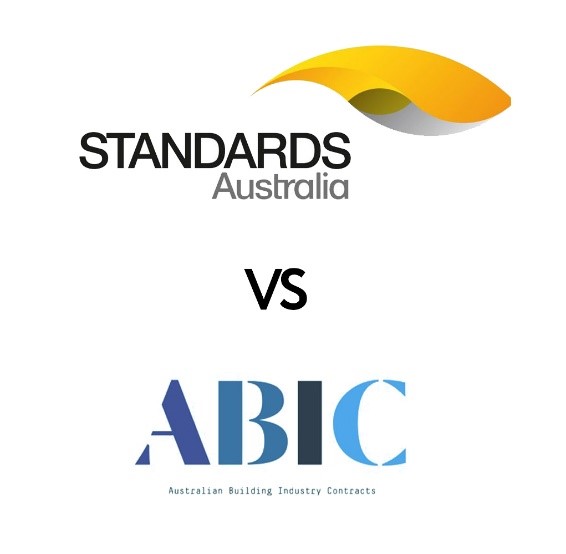AUTHOR: Ing. Alberto Franco
TUTORS: Ing. Giovanni Franchi
INTERNSHIP: –
MASTER: Master in “Project and Contract Management in Construction Works” a.a. 2020/21
Le forme di contratto standard sono da molto tempo una caratteristica dell’industria delle costruzioni. Queste si sono sviluppate da un processo secondo il quale molteplici gruppi, portatori di interessi stendono di comune accordo un documento il quale rifletta una allocazione dei rischi bilanciata ed equa. Questi tipi di contratto sono chiamati “consensuali”.
Il lavoro di questa tesi si sviluppa inizialmente dall’analisi delle forme di contratto standard disponibili nel panorama costruttivo australiano, focalizzandosi sulle più comuni raccolte di contratti “consensuali” cioè quella pubblicata da Standards Australia e ABIC.
L’Australian Standard AS 4905-2002 è stato analizzato nel dettaglio, fornendo le basi per i ragionamenti sviluppati nei casi studio presentati in questa tesi. Con lo scopo di facilitare la comprensione di questo standard per quanto riguarda allocazione dei rischi, ritardi, proroga del termine (EOT), varianti in corso d’opera e strumenti di amministrazione del contratto in generale, si è comparato AS 4905-2002 con lo standard ABIC SW-2018 pubblicato dall’ Australian Building Industry Contracts.
Il focus è portato, quindi, sulla figura del “Superintendent”, termine comunemente usato in Australia per indicare un individuo/società incaricato della gestione del contratto (comparabile alla figura dello “Engineer” nei contratti FIDIC). Le forme standard di contratto analizzate in questa tesi prevedono spesso un duplice ruolo per il Superintendent, ossia quello di agente del committente e quello di certificatore indipendente. La natura contradditoria di questi due ruoli e come essi coesistano nel panorama legislativo australiano sono esaminati attraverso riferimenti alla due più importanti sentenze sulla materia.
Successivamente, il lavoro di questa tesi si sviluppa con la presentazione di tre casi studio riguardanti progetti di edilizia residenziale regolati dalle condizioni di contratto standard incluse nell’Australian Standard AS 4905-2002. L’analisi dei casi studio parte da una dettagliata valutazione delle condizioni speciali di contratto specificatamente redatte per ciascun progetto, per poi continuare focalizzandosi sui “claim” da parte del costruttore e le relative decisioni prese da parte del/della Superintendent.
In particolare, il caso studio 1 tratta tre claim da parte del costruttore dovuti a: danni ai lavori causati da maltempo eccezionale, finalizzazione di importi di denaro provvisori e, infine, discrepanze riguardo la data di fine lavori. Questo studio si sviluppa prendendo in considerazione il punto di vista del Superintendent ed i ragionamenti adottati per valutare i claim, focalizzandosi sulle clausole del contratto impugnate per supportare le sue valutazioni a riguardo.
Il caso studio 2 riguarda la valutazione delle offerte ricevute a seguito della gara d’appalto, l’escalation dello “scope of work” e l’analisi dei claim in relazione a proroghe del termine dei lavori. Anche in questo caso il punto di vista è quello del Superintendent come agente del committente ma, soprattutto, come certificatore indipendente.
Infine, nel caso studio 3 sono analizzate le dispute contrattuali scaturite fra la parti a riguardo di varianti in corso d’opera, programma dei lavori, stato di avanzamento dei lavori e, ancora una volta, EOT. Inoltre, è presentata la procedura di risoluzione delle dispute contrattuali prevista da AS 4905-2002 e come questa fu messa in pratica nel progetto oggetto di questo caso studio.
La prima considerazione che può essere fatta derivante dal lavoro di questa tesi è che per le forme di contratto standard che compongono la raccolta pubblicata da Australian Standards sembra necessaria una revisione ad un ammodernamento in modo da riflettere “sentenze legali e pratiche costruttive attuali”, come professato dalla stessa Australian Standards. Tuttavia, come dimostrato dal fallimentare tentativo intrapreso nel 2015, l’ammodernamento di questa raccolta di contratti non è un’impresa facile poiché con l’aumentare del numero degli interessi rappresentati all’interno del gruppo di lavoro, più difficile è la stesura di un documento unanime e rappresentativo di tutti gli interessi coinvolti.
In generale, la revisione di queste forme di contratto “consensuali” è resa ancora più problematica poiché, anche nelle situazioni in cui si raggiungesse un accordo fra le parti, alcune parti del documento che ne scaturirebbe sarebbero comunque obsolete, essendo in funzione dell’evolversi costantemente dell’industria delle costruzioni. Con queste premesse si può di certo dire che contratti su misura e personalizzazione delle forme standard di contratto continueranno ad essere la norma in Australia. Questo trend è corroborato dai risultati del sondaggio fatto nel 2014 dall’Università di Melbourne insieme alla Society of Construction Law Australia e pubblicati nel relativo “Research Report”. In quest’ultimo è evidenziato come l’84% dei contratti oggetto del sondaggio fosse stato modificato dalla relativa forma standard sui quali erano basati.
Le condizioni contrattuali standard AS 4905-2002 non costituiscono un’eccezione a quanto riportato sopra. Questa forma di contratto standard, il cui uso è raccomandato da Standards Australia per progetti con un valore monetario non oltre $250.000, è solitamente molto modificato in modo da poter essere usato in progetti di scala maggiore.
Infine, la seconda considerazione che può essere fatta riguardo i casi studio presentati è che, anche quando si ha a che fare con progetti di piccola scala, la maggior parte dei claim scaturiscono da varianti in corso d’opera, proroga del termine dei lavori e, come conseguenza di quest’ultime, da discrepanze riguardo la data di fine lavori. Dunque, non c’è da stupirsi se il sopra citato “Research Report” evidenzia come, basandosi sui contratti oggetto del sondaggio, tra le clausole maggiormente modificate ci siano proprio quelle riguardanti varianti (63%) e proroghe di tempo (73%). La ragione per delle percentuali così elevate può essere attribuita al fatto che le forme standard di contratto disponibili in Australia sono obsolete e/o inadeguate, richiedendo quindi modifiche per adattarsi all’ industria delle costruzioni contemporanea. Allo stesso tempo, tuttavia, un’altra causa di ciò può essere attribuita al fatto che, durante la negoziazione di un accordo contrattuale, solitamente ambo le parti cercano di modificare in loro favore le clausole più importanti, in modo da trasferire il rischio alla loro controparte, essendo consapevoli del fatto che la parte che le “controlla”, “controlla”, di fatto, il contratto.
FOR INTERNATIONAL STUDENTS:
Standard forms of contract have been a feature of the construction field for a very long time, typically evolving by a process where a consensus is forged among various industry interest groups leading to the drafting of documents reflecting the risks allocation agreed upon by all the parties involved. These types of contracts are referred to as “consensus” forms.
The work of this thesis departs from the analysis of the standard forms of contract available in the Australian construction industry, with a focus on the most commonly used consensus forms in the country, being the Standards Australia and the ABIC suite of contracts.
The Australian Standard AS 4905-2002 has been analysed in detail, as it provides the basis for the reasoning and the understanding of the three case studies presented in this thesis. Aiming to facilitate the analysis of its most important features in terms of risks allocation, delays/EOTs, variations and contract administration tools in general, an in depth comparison with ABIC SW-2018 has also been undertaken.
The focus is then drawn on the figure of the Superintendent, which is the term commonly used in Australia to describe an individual or business who is given specific contract’s administration functions under a construction contract (similar to the FIDIC’s Engineer). It is not uncommon that the Australian standard forms of contract analysed in this thesis require the Superintendent to play both the role of principal’s agent and independent certifier. The contradictory nature of these competing duties and how they co-exist under the Australian law are examined, with particular references to the two leading law cases on the matter.
The work of this thesis is further developed by presenting three case studies, all involving residential construction projects that were regulated and administered under the Australian Standard AS 4905-2002 General Conditions of Contract. The analysis of the case studies presented departs from the detailed review of the Special Conditions of Contract specifically drafted for each project and then continues focusing on the contractor’s claims and the related superintendent’s determination.
In particular, Case Study 1 covers three claims submitted by the contractor that have arisen from: exceptionally inclement weather causing damages to the works, cost adjustments to provisional sums and, lastly, practical completion. The reasoning developed by the superintendent to assess the above-mentioned claims is analysed, with a focus on the contract provisions challenged to substantiate its determinations.
Scope of work’s escalation, as well as contractor’s claims related to EOT are presented in Case Study 2. Once again, the study is carried out from the point of view of the superintendent as the principal’s agent and, more importantly, as independent certifier under the contract.
Lastly, Case Study No. 3 analyses disputes arisen under the contract between the parties in relation to variation claims, construction programme, progress claims and, once again, EOTs. Additionally, the focus is drawn on the dispute resolution procedure set out in AS 4905-2002 and how it was implemented in the project object of the case study.
The first consideration that can be done from the works of this thesis is that the AS suite seems overdue for revision so as to fulfil its stated aim of “taking into account current legal decisions and current construction practices”. However, as demonstrated by the failed attempt in 2015, the revision of this suite of contracts is not an easy task as the wider the interests represented within the drafting committee, the more difficult reaching final consensus among the latter is.
Generally speaking, the revision of consensus forms of contract is made even more problematic because, even when consensus is finally achieved, the form would be out of date in at least certain aspects as soon as it were published, being a function of the constant evolvement of the construction industry. Hence, it seems that bespoke contracts and heavily amended standard forms will continue to be the norm in Australia. This ongoing trend is corroborated by the findings of the survey carried out in 2014 by the University of Melbourne together with the Society of Construction Law Australia as presented in the published Research Report, which showed that 84% of the surveyed contracts, which employed a standard form, were amended from the relevant published form.
AS 4905-2002 Contract Conditions does not constitute an exception to what stated above. This standard form of contract, which use is recommended by Standards Australia for projects of a simple nature and a monetary value up to $250,000, is usually heavily amended to allow for its employment in projects of a higher monetary value than what is recommended.
The second consideration that can be done is that, from the case studies presented, it is clear how, even when dealing with small-scale construction projects, most of the claims arise out of variations to the works under the contract, EOTs and, consequently, around the date of practical completion. Hence, there is no surprise if the above-mentioned Research Report shows how, based on the surveyed contracts, EOT clauses were amended in the 76% of the cases, whereas variation clauses in the 63%. The reason for such high percentages can be ascribed to the fact that standard forms of contract available in Australia are outdated/inadequate and, hence, requiring amending to be fit in the contemporary construction environment. At the same time, however, another reason can be found in the fact that, when negotiating the contract, each party usually tries to amend the most important provisions in order to shift the risk away from them being aware that, who “controls” the most important clauses, “controls” the contract.


